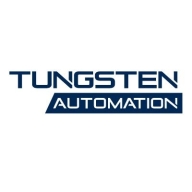


Find out what your peers are saying about Microsoft, Informatica, Talend and others in Data Integration.
The tool has made us tremendously more efficient and saved us a significant amount of money.
Using SSIS has proven cost-effective as there are no additional fees outside the SQL Server license, and it significantly enhances data management efficiency.
We also have the flexibility to submit a feature request to be included as part of the wishlist, potentially becoming a product feature in subsequent releases.
IBM tech support has allocated dedicated resources, making it satisfactory.
The first line of support needs to be more knowledgeable.
It processes large volumes of data quickly.
I wonder if it supports other areas, such as cloud environments with open source support, or EdgeShift.
The solution needs improvement in connectivity with big data technologies such as Spark.
Within the South African context, if you are getting your enterprise agreement from First Technology, they don't provide support.
The logging capabilities could be improved, particularly for error logging.
SSIS has a difficult learning curve when dealing with complex transformations.
Pricing for IBM InfoSphere DataStage is moderate and not much expensive.
Utilizing SSIS involves no extra charges beyond the SQL Server license.
It was included in our licensing for SQL server, and our licensing for SQL server was extremely cheap, making it a very good price point for us.
IBM InfoSphere DataStage is very scalable, allowing us to extend it according to our processing needs.
It is straightforward from a design and development perspective, and also for deployment.
It is a very robust tool that can work with many data sources, and its main strength is that it is extremely easy to use.
One of the best aspects of SSIS is that it is built into Microsoft SQL Server, so there are no additional costs involved.
SSAS is included in the base installation of SQL Server.
| Product | Market Share (%) |
|---|---|
| IBM InfoSphere DataStage | 3.5% |
| Informatica PowerCenter | 6.0% |
| SSIS | 5.7% |
| Other | 84.8% |
| Product | Market Share (%) |
|---|---|
| SSIS | 5.7% |
| Informatica PowerCenter | 6.0% |
| Azure Data Factory | 5.2% |
| Other | 83.1% |
| Product | Market Share (%) |
|---|---|
| Tungsten RPA | 2.1% |
| UiPath Platform | 17.9% |
| Microsoft Power Automate | 17.7% |
| Other | 62.3% |



| Company Size | Count |
|---|---|
| Small Business | 23 |
| Midsize Enterprise | 4 |
| Large Enterprise | 25 |
| Company Size | Count |
|---|---|
| Small Business | 26 |
| Midsize Enterprise | 19 |
| Large Enterprise | 57 |
| Company Size | Count |
|---|---|
| Small Business | 11 |
| Midsize Enterprise | 1 |
| Large Enterprise | 18 |
IBM InfoSphere DataStage is a high-quality data integration tool that aims to design, develop, and run jobs that move and transform data for organizations of different sizes. The product works by integrating data across multiple systems through a high-performance parallel framework. It supports extended metadata management, enterprise connectivity, and integration of all types of data.
The solution is the data integration component of IBM InfoSphere Information Server, providing a graphical framework for moving data from source systems to target systems. IBM InfoSphere DataStage can deliver data to data warehouses, data marts, operational data sources, and other enterprise applications. The tool works with various types of patterns - extract, transform and load (ETL), and extract, load, and transform (ELT). The scalability of the platform is achieved by using parallel processing and enterprise connectivity.
The solution has various versions, catering to different types of companies, which include the Server Edition, the Enterprise Edition, and the MVS Edition. Depending on which version a company has bought, different goals can be achieved. They include the following:
IBM InfoSphere DataStage can be deployed in various ways, including:
IBM InfoSphere DataStage Features
The tool has various features through which users can integrate and utilize their data effectively. The components of IBM InfoSphere DataStage include:
IBM InfoSphere DataStage Benefits
This solution offers many benefits for the companies that utilize it for data integration. Some of these benefits include:
Reviews from Real Users
A data/solution architect at a computer software company says the product is robust, easy to use, has a simple error logging mechanism, and works very well for huge volumes of data.
Tirthankar Roy Chowdhury, team leader at Tata Consultancy Services, feels the tool is user-friendly with a lot of functionalities, and doesn't require much coding because of its drag-and-drop features.
SSIS is a versatile tool for data integration tasks like ETL processes, data migration, and real-time data processing. Users appreciate its ease of use, data transformation tools, scheduling capabilities, and extensive connectivity options. It enhances productivity and efficiency within organizations by streamlining data-related processes and improving data quality and consistency.